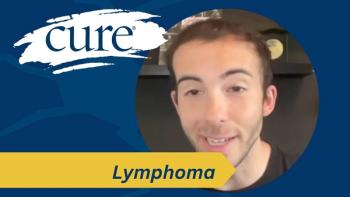
Lymphedema Awareness
Lymphedema can occur years after cancer, but exercise and lymphatic massages can help relieve symptoms.
I was diagnosed with breast cancer in early 2015, but it was not until the end of 2018 that I had my first experience with lymphedema. Per the
After hearing feedback from peers who had been living with breast cancer for several years, I visited a lymphedema specialist. Measurements of both of my arms were documented and special attention was given to the arm next to where my lymph node was removed. I was told I was at low risk for lymphedema. My risk factor for lymphedema was even less since I often perform specific arm exercises during yoga or other exercise to help prevent lymphatic fluid from building up in my arms.
By early November, however, I noticed a suspicious lump or swollen lymph node next to where my sentinel lymph node was removed. This was scary as I initially feared it as a sign of recurrence. Fortunately, I soon suspected it was possible the reaction from fighting off a potential virus because I was reminded of other times in my life when my immune system was responding to a cold or other illness.
What followed my feeling this suspicious lump, however, was a new experience — I noticed an extreme feeling of heaviness and swelling in or near my right breast and into the armpit on the right side of my body. By the time an ultrasound was ordered by my oncologist, it was documented I had a significant amount of fluid around my right breast and I had lymphedema.
When I followed up with my plastic surgeon, an aspiration of my right breast was a recommendation to avoid infection and to help drain fluids from my body. While I awaited results of my testing, I practiced yoga, used poses to help with range of motion, and did so in a manner that I felt would potentially help move lymphatic fluids in my body. I additionally followed up with the lymphedema specialist who had performed my lymphedema evaluation and had a special lymphatic massage. Between the massage and the yoga practice, I began to feel like my body was responding positively, and the feeling of discomfort and tightness in and near my chest began to dissipate. A repeat ultrasound was ordered in lieu of the aspiration. The results of the ultrasound were positive, and it was a huge relief when it was determined an aspiration would not need to be performed. What began as a fear of recurrence was my first experience with lymphedema. I have since learned that even while at a low risk for lymphedema, it can still occur years and months after lymph nodes are removed from the body. For me, it seemed to be triggered by my own immune system working to fight off a virus in my body.
While a good majority of breast cancer survivors experience lymphedema in their affected arm following lymph node removal, this is not the only area that can be impacted. It is believed that due to my staying consistently active, fluid did not have a chance to build up in my arm, but it had to go somewhere, and for me this was initially in the right upper chest. If I notice symptoms coming on in the future, I will continue to exercise and see my trained lymphatic specialist right away for an evaluation and a preventative lymphatic massage. I also encourage women who wear bras to be aware of how tight the band is, or if there is a bralette or another attractive garment that may not be constricting. I immediately changed my lingerie to be less constricting and to avoid further trapping fluid near my breast or upper chest.
If you feel you have experienced symptoms of lymphedema following a cancer diagnosis, it is very important you see a medical professional, as fluid retention can lead to infection and hardening or thickness of the skin and other complications. Caution should be used to ensure the person you may see for a lymphatic massage is properly trained and that you are cleared by your oncologist to use the procedure as a complementary treatment option.





